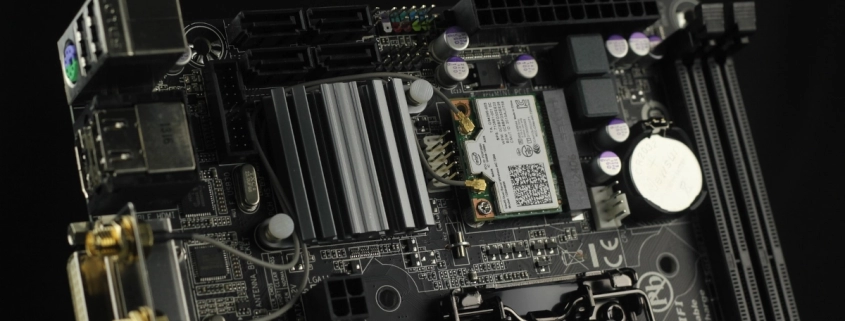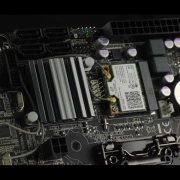A Lesson in CMOS Corruption | High Density RAM

Table of Contents
Intro
Pulling your hair out trying to troubleshoot a computer? CMOS corruption and high density RAM may be the ghosts you’re looking for. I have been using a Lenovo ThinkPad P50 since Q4 of 2016 as my daily driver laptop. It’s still working perfectly and does all I need it to do but it has an Intel® Core™ i7-6700HQ CPU which is not supported for Windows 11.
My ThinkPad P50 is also equipped with a NVIDIA Quadro M1000M GPU which has been able to play a few games I enjoy on occasion. For example, I’ve played Rocket League on it, Kingdom Hearts HD 1.5+2.5 ReMIX once a month. I also test the Ratchet and Clank series games on PCSX2, and the Jak series games with OpenGOAL and they run well. I paid $1600 for my ThinkPad P50 back then and didn’t want to spend that much this time around.
Lenovo Legion 5 Pro
For my new daily driver laptop I decided to go with the Lenovo Legion 5 Pro 16″ (2022). This laptop is equipped with a Intel® Core™ i7-12700H CPU and a NVIDIA GeForce RTX 3050Ti GPU for just under $1200. You may ask why the 2022 model? Well, I didn’t want to deal with Intel 13th generation CPU issues and I don’t yet trust the issues were fixed in 14th generation, and I didn’t want to switch to AMD. I do not plan to do any serious gaming on this laptop but I find the laptop to be of very good build quality to be my new daily driver.
When I got the laptop, I booted it up and the fans were really loud at first. It reminded me of either poor thermal paste application or an overlocking or high performance mode enabled. I noticed the current BIOS revision was 2 years old and so I updated the BIOS and checked the BIOS settings. There were some overclocking options enabled on the CPU and GPU enabled and I turned those off. That did not solve the issue with the loud fans
High Density RAM | 20% Performance Hit?
So I decided to open the laptop and discovered it’s also using high density 1Rx16 memory modules. Linus Tech Tips did a video about how these memory modules could cause around a 20% performance hit. I wanted to upgrade the RAM to 32GB, so I purchased two 16GB 1Rx8 modules at 5600 MHz The Lenovo Legion 5 Pro spec sheets says it only supports 4800 MHz, but the CPU does support higher. The new modules I bought can downclock to 5200 MHz or 4800 MHz if the firmware or motherboard is locking the memory at 4800 MHz.
I noticed the new modules only had memory chips on one side still despite being 1Rx8, which I did confirm again. It’s unknown to me if a module of 1Rx8 with memory chips on both sides will perform better than one having memory chips on one side. I decided to ask ChatGPT and this what it said:
In terms of performance, 1Rx8 (chips on both sides) and 1Rx8 (chips on one side) are typically very similar. The key distinction between them lies in the configuration of the memory chips rather than their density.
- 1Rx8 (chips on both sides):
- Commonly known as “dual-rank” memory, even though it may only have a single rank.
- Has memory chips on both sides of the module, which can improve bandwidth slightly due to how the memory controller accesses data. In certain workloads, having memory chips spread across both sides could marginally improve performance.
- 1Rx8 (chips on one side):
- “Single-sided” modules with all the memory chips on one side. This doesn’t inherently mean worse performance but is simply a space-saving design.
Performance Considerations:
- Data access: In most cases, 1Rx8 (chips on both sides) may have a slight edge in bandwidth because having chips on both sides can lead to better data interleaving and memory controller efficiency. However, this advantage is minor and may not be noticeable in everyday use or gaming, where the primary bottlenecks are elsewhere.
- Thermal aspects: Modules with chips on both sides may spread heat more evenly than single-sided ones, but this again depends on the design of the cooling solution in your laptop.
Key Takeaway:
In practice, both types of 1Rx8 modules (single-sided and double-sided) perform similarly. The difference is mostly visual, with performance variations so small that they would be hard to detect without benchmarking. Therefore, you should not worry about performance degradation as seen in 1Rx16 modules, but there is no definitive data suggesting that one-sided 1Rx8 modules are inferior to two-sided ones.
Issues and Instability
I installed the new memory and did two test restarts, no issues. After putting the bottom cover back on and booting up the laptop, it was giving me a black screen and shutting off after running Windows for a few minutes, very unstable with the new 1Rx8 5600 MHz memory. I double checked the BIOS settings, even factory reset it, no good. I placed the previous memory in the system and it was working fine. The fans were still revving high in a pattern, like someone breathing, like it had been since I bought it.
CMOS Corruption
I decided I wanted to check the thermal paste and considered installing PTM7950 thermal pads, video on that here. I unplugged the battery from the system and decided to try the new RAM one more time as maybe I didn’t seat it properly, I did not unplug the battery the first time I installed it.
The laptop is now extremely quiet and working just fine with the new RAM. I don’t believe I installed the RAM wrong the first time. I believe this was a case of CMOS corruption.
I believe the BIOS config was not able to reset itself or apply new settings due to an issue that was resolved from killing power to the board. I asked ChatGPT to give more more info on CMOS corruption, as I’ve run into this only a handful of times.
CMOS corruption occurs when the data stored in the CMOS (Complementary Metal-Oxide-Semiconductor) chip on the motherboard becomes corrupt or unreadable. The CMOS chip stores essential system settings such as the system clock, BIOS settings, and hardware configuration. This is critical for your computer to boot properly and maintain system stability.
When CMOS corruption happens, the system may fail to retain certain settings (like date/time or boot configuration) or may not boot at all. Common symptoms include:
- Error messages during startup (e.g., “CMOS Checksum Error”)
- System time and date resetting frequently
- Difficulty booting or constant reboots
Causes of CMOS Corruption:
- Weak or Dead CMOS Battery: The CMOS chip is powered by a small battery on the motherboard. If the battery dies, the chip can no longer retain data when the system is powered off.
- BIOS Update Gone Wrong: If a BIOS update fails or is interrupted, the settings stored in the CMOS can become corrupt.
- Power Surges or Failures: Sudden power interruptions or surges can affect the integrity of data in the CMOS.
- Overclocking: Misconfigurations during overclocking or incompatible hardware changes can lead to CMOS corruption.
- Software Conflicts: Some applications or updates may inadvertently change or damage the CMOS settings.
- Hardware Faults: Issues with the motherboard or related components can cause the CMOS to become corrupted.
How Common is CMOS Corruption?
CMOS corruption is not very common, especially with modern systems, but it can happen in specific scenarios, like the ones listed above. A dying CMOS battery is the most frequent cause, and replacing it usually resolves the issue.
Solutions:
- Replace the CMOS Battery: This is the most straightforward fix if the issue is due to a weak battery.
- Reset BIOS/CMOS: Resetting the BIOS to default settings can often fix corruption. This is usually done by entering the BIOS menu or using a jumper on the motherboard.
- Update the BIOS: A fresh or updated BIOS may help fix recurring CMOS issues.
If the issue is resolved after resetting the CMOS, it likely won’t reoccur unless there’s a deeper hardware or power-related problem.
Conclusion
Since the fans are quiet as expected now, I suspect there was an overlocking or performance setting stuck in the CMOS config not being reset until the power to the battery was removed. I don’t recommend clearing the CMOS as a first-step in troubleshooting anyone’s computer. Manually recording the current BIOS settings should be done first before doing so due to the following:
- RAID configuration
- TPM settings for BitLocker
- Custom UEFI or Secure Boot keys (rare)
- SATA Controller Mode: IDE, AHCI, RAID
In some instances without proper backup and documentation and just jumping straight to CMOS clearing you can cause more headaches for yourself and possibly data loss.
My name is Dex Sandel, author at WinReflection.
I am a Christian, conservative, and truth seeker that is not afraid to be vocal on important or controversial issues, silence leads to death. When a person has that courage the enemy tries to send haters and wolves in sheep’s clothing their way. There are many rewards earned in Heaven for those that refuse to give up. There’s more to life than the worldly status quo and that’s why many are sad and depressed, they’re suffocating! Truth and purpose can bring fresh air into one’s life and that’s my mission.
The best is yet to come, and nothing can stop what’s coming!
John 3:16: For God so loved the world that he gave his one and only Son, that whoever believes in him shall not perish but have eternal life.


Leave a Reply
Want to join the discussion?Feel free to contribute!